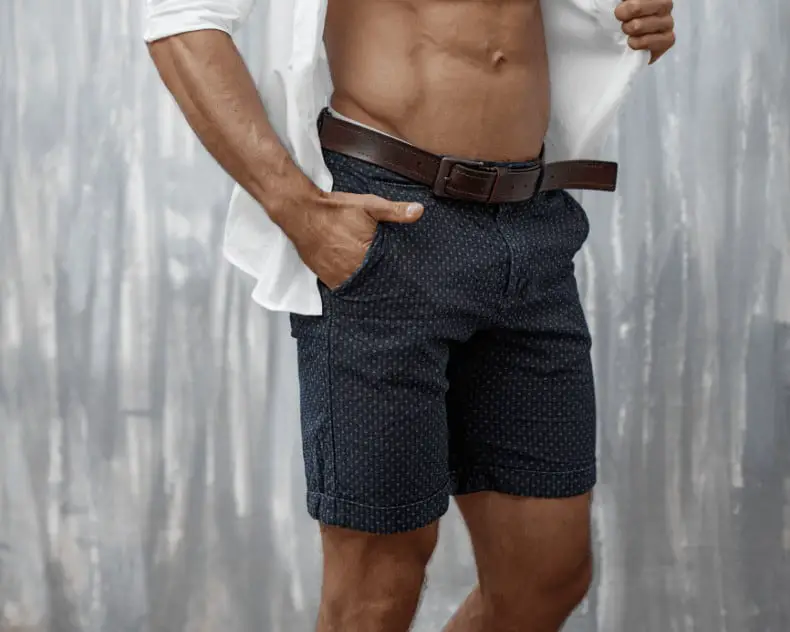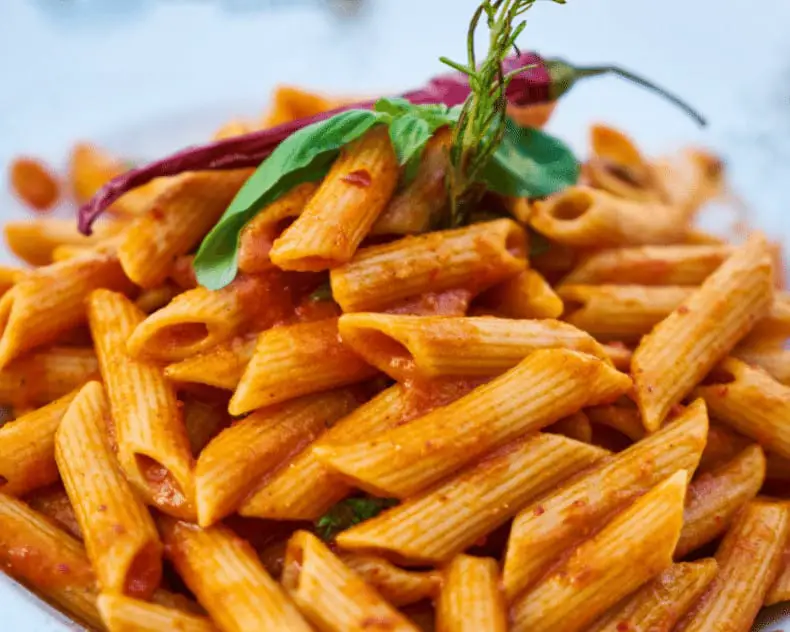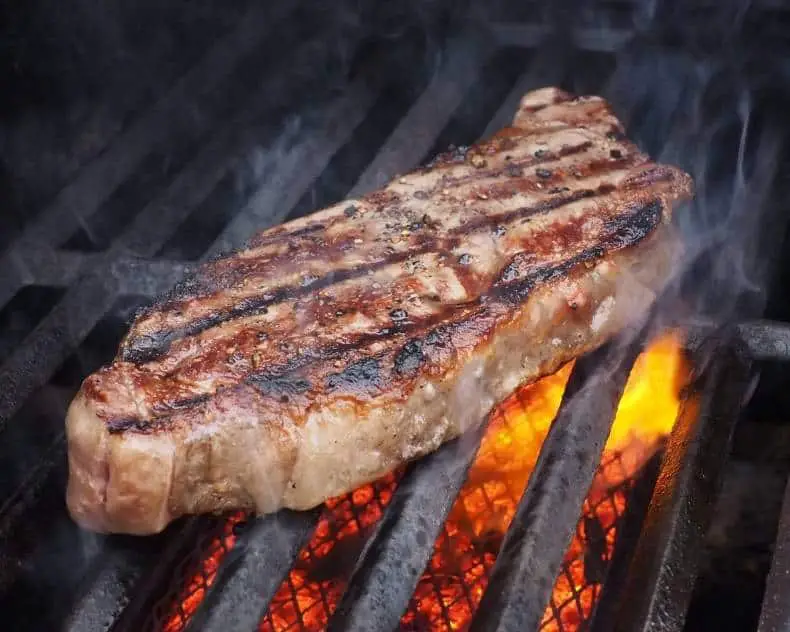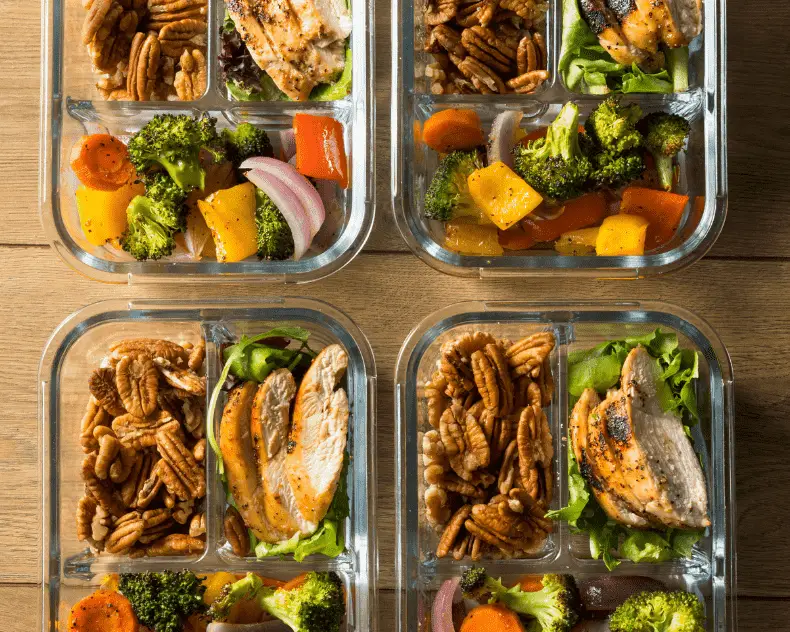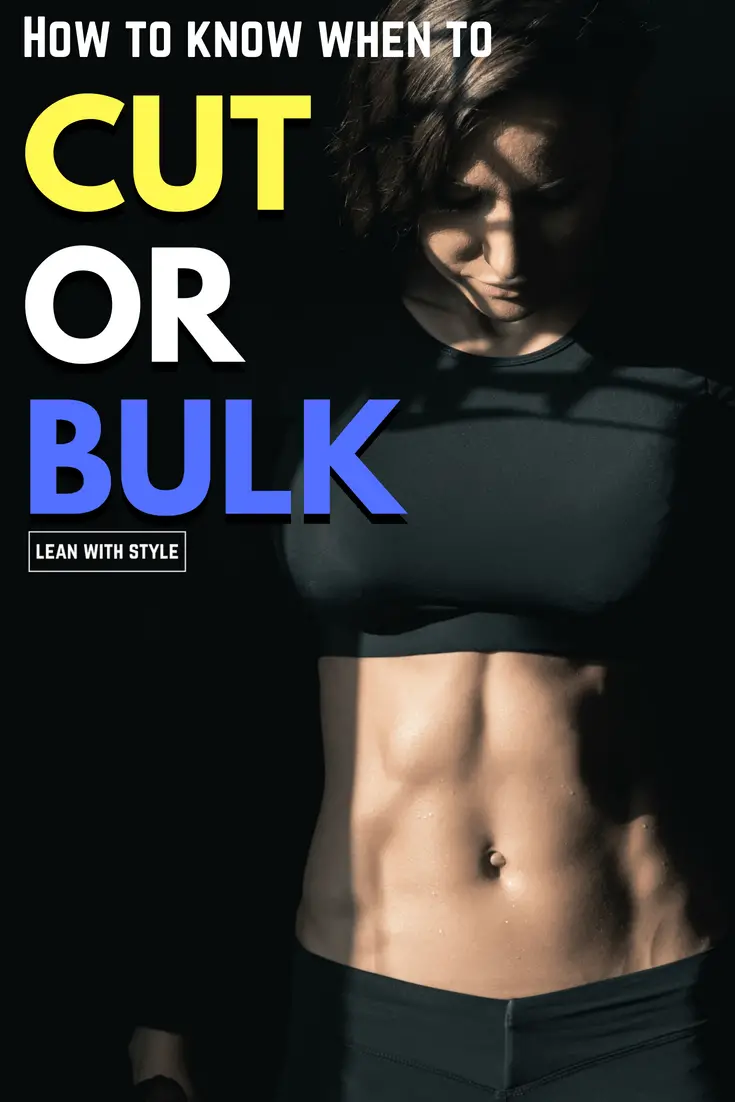
If you’re wondering whether you should bulk or cut first, then you should read this quick article.
If you’re reading this, I assume you know what cutting and bulking is, and you have a clear definition of each.
However, what most people forget is how people usually end up choosing between the two.
Your goal is usually dictated by how you were born—let me explain.
For example, natural-born chubby people (endomorphs), like me, have always struggled to lose fat and put on fat much easier than others.
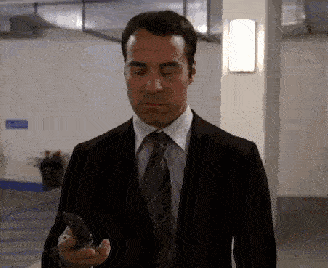
It takes a tad bit longer to lose fat and we’re NOT happy about it.
These body types spend their time in the cutting realm.
On the other hand, we have the polar opposite.
People who were born skinny and have a hard time gaining weight (ectomorphs), specifically, lean muscle mass.
They spend most of their time trying to gain size and pack on muscle.
If you hear someone say “Hey man, I’m going on a ‘cut/bulk’ for a few months” and you didn’t know what it meant, no worries.
I’ll explain it as cut and dry as I can for you.
Cutting is short for cutting fat off your body, not literally, but the aim is to get lean. A term used to indicate a fat loss phase for a given amount of time. It could’ve easily been titled “shredding”. You must be in a caloric deficit during a cutting phase.
Bulking is short for gaining muscle. A term used to indicate building muscle for a given amount of time, which also could’ve been called something different—“ gaining” comes to mind. You must be in a caloric surplus during a bulking phase.
Bulking and cutting come in cycles, ideally, you’d want to spend more time on bulking over cutting.
Why?
Because it’s a lot harder to put on muscle than it is to put on fat, but more on this towards the end of this article.
Editor’s Note:
There’s a third term that’s been used in the past and that is maintenance or maintaining.
This is where you’re neither trying to build muscle or lose fat.
You’re happy at this stage and it’s usually summer time.
Another reason why people go on maintenance is for a diet break.
This is usually done to give yourself a break from cutting phases.
Maintenance calories, or Total Daily Energy Expenditure calories, can be calculated using many methods, some being more complicated than others.
There is the Katch-McArdle formula, the Harris-Benedict formula, both of which require some hassle to get the needed variables.
A simpler method, that works just as well, to estimate your maintenance calories is the multipliers method.
Take your body weight in pounds and multiply it by 15 and you’re roughly at your maintenance calories.
It’s important to note that any method you use to get maintenance calories are always estimates.
They’re never 100% accurate.
How to Know When To Cut
There are two things to consider when deciding on when to cut.
- Your Current Body Fat Percentage
- Your Overall Fitness Goals
Your current body fat percentage will determine where you should begin (more on this below).
Your overall fitness goals will help you realize how to get to your goal faster.
As you know, achieving your goals isn’t always a straight line.
For example, if you want to look like a Hollywood actor or actress, and you’re currently overweight, you can’t just “cut” your way down to your desired weight, and all the sudden be chiseled and sculpted like these Actors and Actresses’.
- Once you lose weight, you have to add muscle then and go on a “bulk,” which will add some fat to your physique due to being in a caloric surplus.
- Then, once you’ve added a good amount of muscle (which comes with some fat gain), you have to cut again and aim to keep that muscle while losing the fat.
- It’s a long cycle of cutting and bulking until you reach your GOAL physique, and you have to realize this first and foremost before you even begin.
If you’ve understood everything up to this point, then you’re on the right track.
So, here’s how to answer the question: “Should I bulk or cut?”
Here’s a great article on finding your own body fat percentage:
How to Accurately Measure Your Body Fat Percentage
Here are the reasons why I’ve chosen these numbers to go by when deciding on when to cut.
1. Anything Above 15% Body Fat (or 25% for Women) And You’ll Start to Feel Fat
Once you pass these body fat (BF) percentages, your body starts to look a lot less defined and eventually, you’ll start to look fat.
No one likes to feel or look fat.
That’s why making these percentages the limit is a good idea.
Another thing to note is that it’s a lot easier to cut down from 15% BF to 10% BF than it is to start from 20% BF or above.
It makes things a whole lot easier, faster, and you’ll be able to spend more time building muscle 😀
2. You Spend a Shorter Amount of Time Cutting Which Means More Time Building Solid Muscle
A fat loss phase should never take longer than three months.
A lot of problems can ensue if you’re in a caloric deficit for too long:
- You’re bound to lose a lot of muscle
- You’ll be frustrated and impatient with how long it’s taking
- You’ll begin to doubt yourself
- You’ll have to deal with hunger and cravings a lot more
- The less amount of time you’re building muscle
This is why I made 15% body fat the limit to how “fat” you should get.
It’s a lot more manageable.
3. You’ll Just Look Better
Staying within the 10-15% Body Fat range (20-25% for women) will always leave you looking fit.
No, you don’t need to be absolutely “shredded” year round, but staying within these ranges ensures that you’ll always be motivated to keep your “fit” look.
How to Know When To Bulk
It’s okay to start at 11-12 percent body fat if you’re okay with your bulking cycle being cut shorter than the norm.
Starting at too high of a body fat percentage may have you cycling your bulking and cutting phases at a higher frequency.
Here’s are the reasons why I’ve chosen these numbers to go by when deciding on when to bulk.
1. You Gain More Muscle When You Start Your Bulk When You’re Already Lean.
The leaner you get, the more insulin sensitive you become.
Insulin is a hormone that delivers the nutrients into the cells.
- The fatter you get, the less sensitive you get to insulin (known as insulin resistance).
- The leaner you get, the more sensitive you get to insulin.
The bottom line is this:
Insulin resistance “accelerates muscle protein degradation.“
You don’t want this.
You want the opposite of this, which means, being insulin sensitive – which happens when you’re leaner.
The more sensitive you are to insulin, the better it can do it’s job which also happens to include building muscle 😀
2. You Don’t Gain Fat As Fast When You’re Already Lean
This only happens if you’re not following a “dirty bulk.” More on what this is later.
Insulin comes into play again here.
When you’re already lean, which means you should be insulin sensitive, your body can take the calories you’re consuming and store a higher number of them into muscle and glycogen.
This way, you can minimize the fat gain while eating in a caloric surplus.
It’s a win-win 😀
Cutting Done Properly

Losing weight, preferably from fat, requires being in a caloric deficit or eating less than what your body needs.
The cardinal rule of calories in versus calories out comes into play here.
You can lose fat by being in a 10 or 15 percent deficit, but that’s awfully slow.
A better rate of weight loss will come, safely, at a 20-25 percent deficit.
Step 1: Find Your 20-25% Caloric Deficit
This video will show you exactly how to find your fat loss calories based on your activity level :D.
Step 2: Eat a High-Protein Diet
If you don’t eat a high protein diet while cutting, a few things will happen:
- You’ll lose muscle.
- The potential to lose muscle increases when you’re not giving enough energy (calories) to your body. Since you’re cutting, you’re in a prime-state for muscle loss. Get your protein!
- You’ll look “skinny fat” – given that you’ve lost weight without eating enough protein
- This is not a good look in the least. Getting protein is only one part of the equation though. Check out Step #3.
- You’ll have a harder time sticking to your diet
- Protein is the most filling macro-nutrient. Fat loss is all about staying in a caloric deficit, and if you’re feeling hungry all of the time, it’s going to be a lot harder to stay in that caloric deficit. Protein helps with this.
Protein, by far, is the most important macro-nutrient that you need to track.
I recommend anywhere from 0.8-1.1g or protein per pound of body-weight.
Step 3: Follow a Strength Training Routine – Lift Heavy
The right way to do a cutting phase is to lose fat while preserving as much strength—muscle—as possible.
How is that done?
One, your macro-nutrients and two your strength training protocol.
Your strength training routine should involve the following:
- Starting each workout with a compound movement
- A compound movement is any movement that works multiple joints and muscles at the same time. Examples of this would be the Squat, Bench Press, Overhead Press, Deadlift, and Pull-ups.
- Use heavy weights
- By heavy I mean anywhere from 75-85% of your 1 Rep Max.
- This also means staying in the 4-6 or 8-10 rep range depending on how heavy you go.
- Train 3-4 Days Per Week
Yes, ultimately it’s all about the caloric deficit, but if you want to avoid the skinny fat look than integrating heavy strength training 3-4 days per week is necessary.
Step 4: Do 3-4 Cardio Workouts Per Week
You can do all types of cardio when cutting.
So which form is the best?
I prefer doing a combination of HIIT, yoga, and walking.
It’s what works best for me.
Here’s a HIIT routine you could follow:
I like doing HIIT often because it gives you more bang for your buck.
I’d recommend doing HIIT 1-2 times per week (25-30 minutes), while walking or doing yoga the other 1-2 times per week.
Step 5: Take Fat Loss Supplements (Optional)
No, you do NOT need supplements to lose fat, however, the right supplements, do help you speed up the process!
I specifically take this fat loss supplement stack whenever I go on a cut to lose fat fast.
Although fat loss can occur with a caloric deficit alone it’s ideal to accompany it with a catalyst to accelerate fat loss.
Recommended Reading:
The Best Fat Loss Supplements To Speed Up Your Cut
The Bottom Line on Cutting
To have a successful cut:
- Be in a caloric deficit (25% is preferred)
- Eat enough protein
- Strength Train 3-4 days a week
- Do Cardio 3-4 days a week
- Optional – Take fat loss supplements
Preserving strength is about making sure the weight you lose comes from your fat stores and not your muscle tissues.
Muscle is a lot harder to regain than fat is.
Strength training and cardio play a role in how much fat you lose per week.
The best fat loss programs will have a blueprint set for you to follow.
Combining a caloric deficit and an exercise program are the fundamentals of cutting the right way so you don’t waste precious time.
You see, if you spend the majority of your year cutting, you’re wasting time you could be using to build muscle.
Which as you know, is added at a much slower rate than fat.
To summarize, a cutting cycle done the right way is getting to your target body fat percentage while preserving as much strength as possible, in the shortest amount of time.
Now, let’s move onto the opposite cycle.
Bulking Done Properly

Building muscle, bulking, demands being in a caloric surplus to occur.
This is common knowledge, but it’s also where things start to get messy.
Bulking is attributed to eating more than your body needs in order to promote muscle growth, but how much more is really necessary?
The magnitude of your caloric surplus range depends on the style of bulk you do.
Two styles exist: Dirty and Clean bulking.
Dirty bulking being, eating almost everything that comes across your path, calories usually at 18-19 times body weight in pounds.
This isn’t ideal because eventually, you’re going to have to cut for a longer period of time when you decide to stop bulking.
Folks who do this are concerned with putting on as much size ASAP and as a result, gain a ton more unnecessary fat.
The counterculture, lean bulkers, eat in a moderate surplus of 200-400 calories more than maintenance and focus on gaining as much muscle while keeping fat gains to an absolute minimum.
The approach for a lean bulk isn’t much different from cutting.
Only one thing changes:
- Instead of being in a caloric deficit, you must be in a caloric surplus
- This means eating around 200-400 calories above maintenance. Your maintenance calories are roughly 15 x your current body weight in lbs.
Everything else stays the same.
You should still:
- Eat enough protein
- You don’t need as much protein as you did when you were cutting. 0.8 grams per pound of body weight should suffice.
- Strength Train 3-4 days a week
- You could add an additional day if you want, however, it’s not necessary.
- Do Cardio 1-3 days a week
- You see, a lot of people, when they start a bulk, stop doing cardio.
- I don’t like this approach because when you have to cut again, you’re conditioning will be shot and it’ll be harder to get back into cardiovascular shape.
- I’m not saying you should do cardio every-day, but do it 1-3 times per week even if it’s just walking.
- I would recommend, however, getting one long HIIT workout in each week to keep yourself healthy.
- Optional – Supplements
- Fat Loss Supplements aren’t necessary during a bulk, but some supplements such as pre-workout and post-workout supplements could help. I use this “Build Muscle Stack” whenever I go on a bulk to see faster results.
Popular Cutting & Bulking Programs
The Best Cutting Program for Men
For Men, the best cutting program I’d recommend for you is Radu Antoniu’s Shredsmart.
I’ve been reviewing this program since it’s origin back in 2016.
Since then it’s gone through some changes, but make no mistake, Shredsmart is awesome for leaning down.
It uses the dieting protocol Intermittent fasting to help you adhere to the calorie deficit that is required to lean down.
The Best Cutting Program for Women
For Women, the best cutting program I’d recommend for you is Rusty Moores’ Visual Impact For Women.
Answer me this:
Would you rather look like a Fitness Competitor or a Victoria Secret Model?
If you answered Victoria Secret Model, then I believe this product is PERFECT for you.
Rusty Moore, former Male and Female Runway Model Trainer has created a course that helps women look their best by adding muscle without adding any size.
Here’s what he said about his course:
If you want to look like a female bodybuilder or fitness competitor…this course is not for you. There is a ton of information online to achieve that look, but that is not what this is about.
If you’re interested in learning more, click here.
The Best Bulking Program for Women
I’d stick to the same course that was mentioned above for women, Visual Impact For Women.
Rusty has two sections in the course for losing fat and gaining muscle.
You won’t be dissapointed.
The Best Bulking Program for Men
For men, the best bulking program I’d recommend for you is Rusty Moores’ Visual Impact Muscle Building Course:
Rusty Moore, creator the Visual Impact Muscle Building was a former trainer for fashion models whose primary focus was gaining strength without adding much size.
Rusty walks the walk and talks the talk.
The program is broken into 3 phases (pictured below).
Here’s a sneak peak into the program:
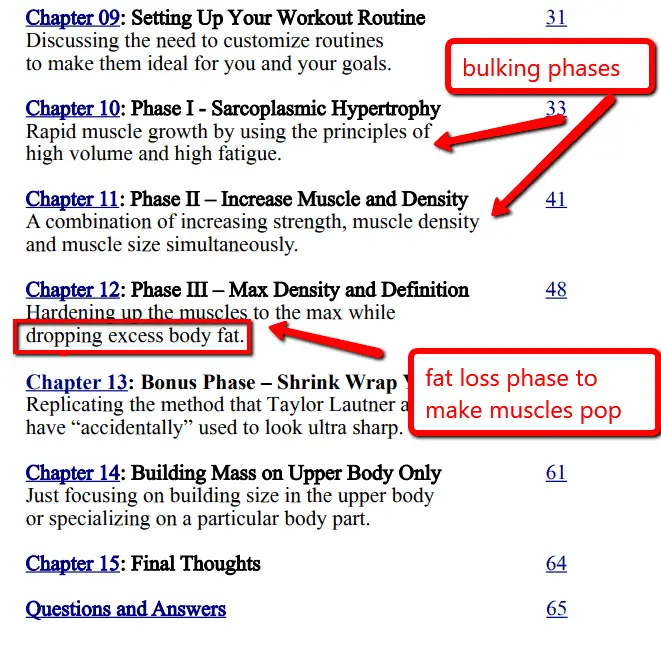
At the price of 37$, this is a great solution for those of you who want to save money and get great value.
You’re essentially getting a bulking and fat loss program in one.
Another great option that is more minimal and only 3 days per week is the Greek God Program. Check out my review here.
I hope this article helps point you in the right direction 🙂
Chris

